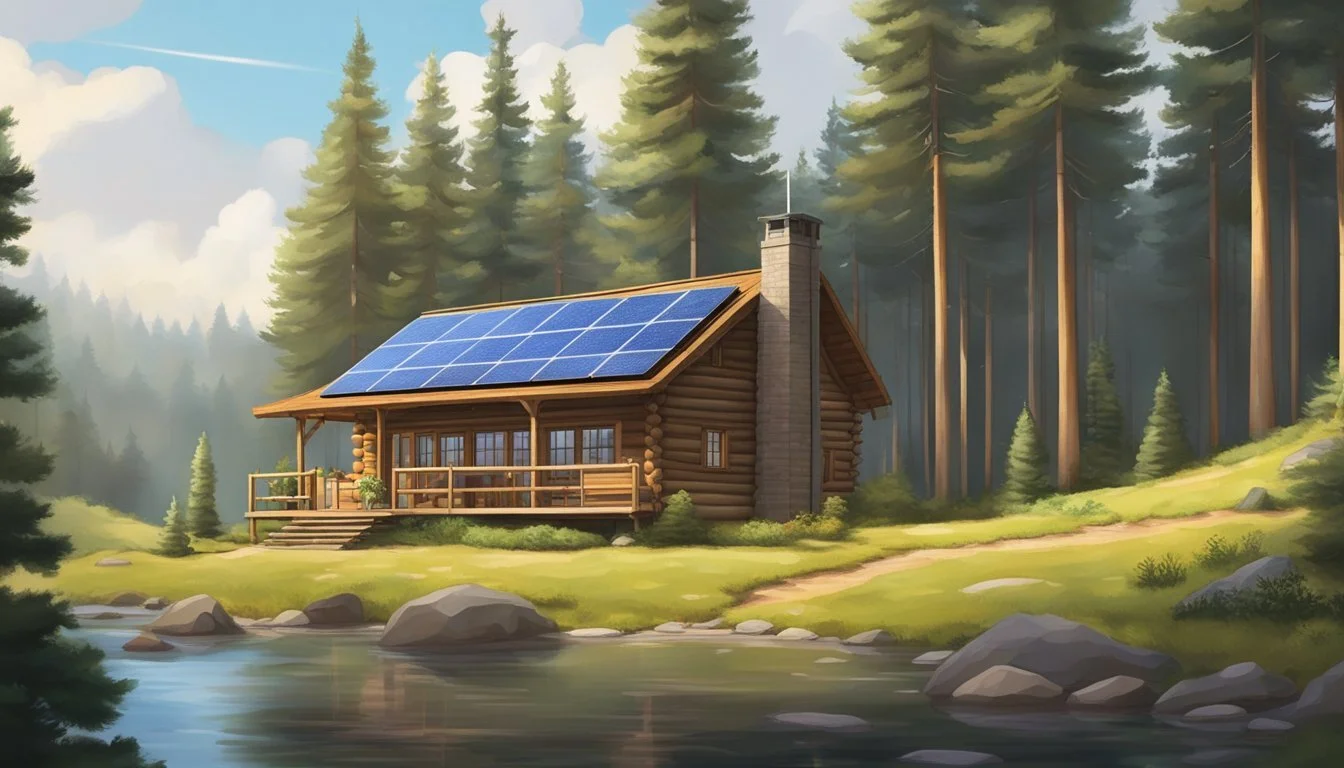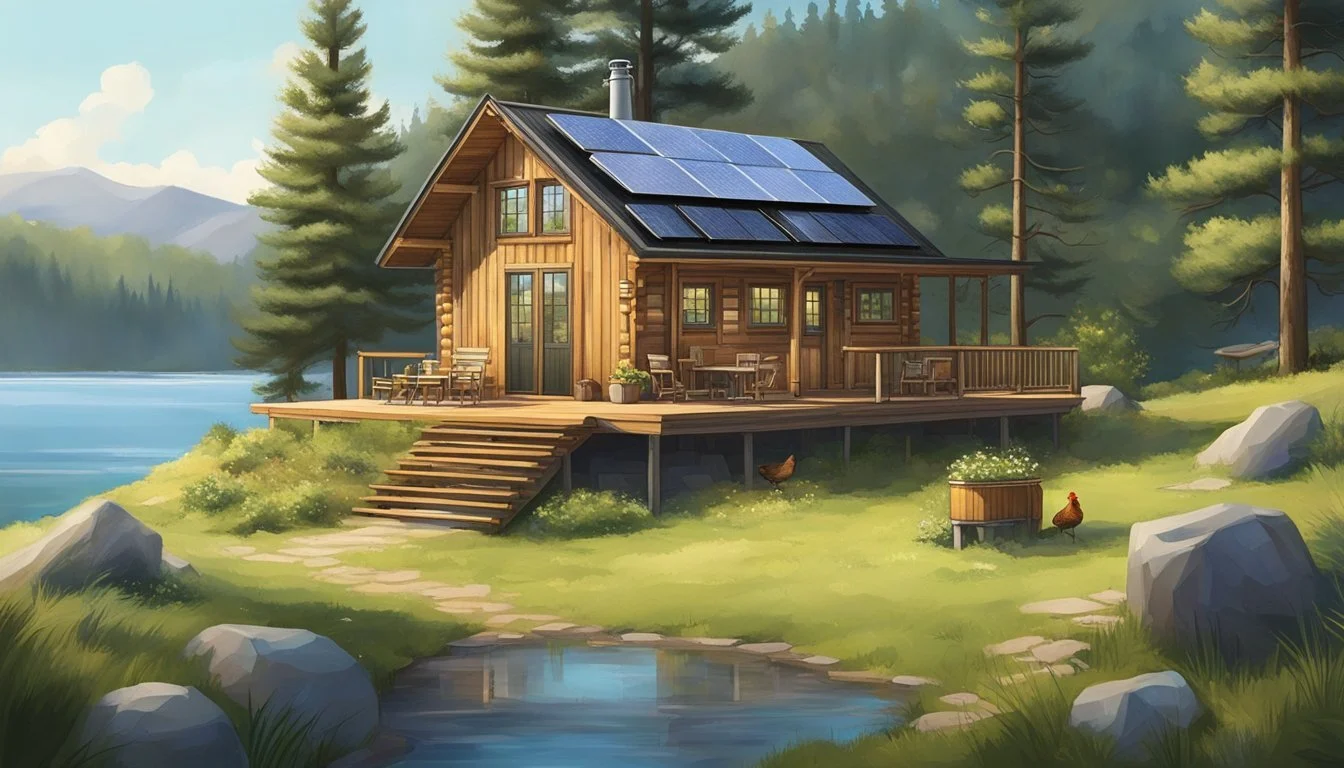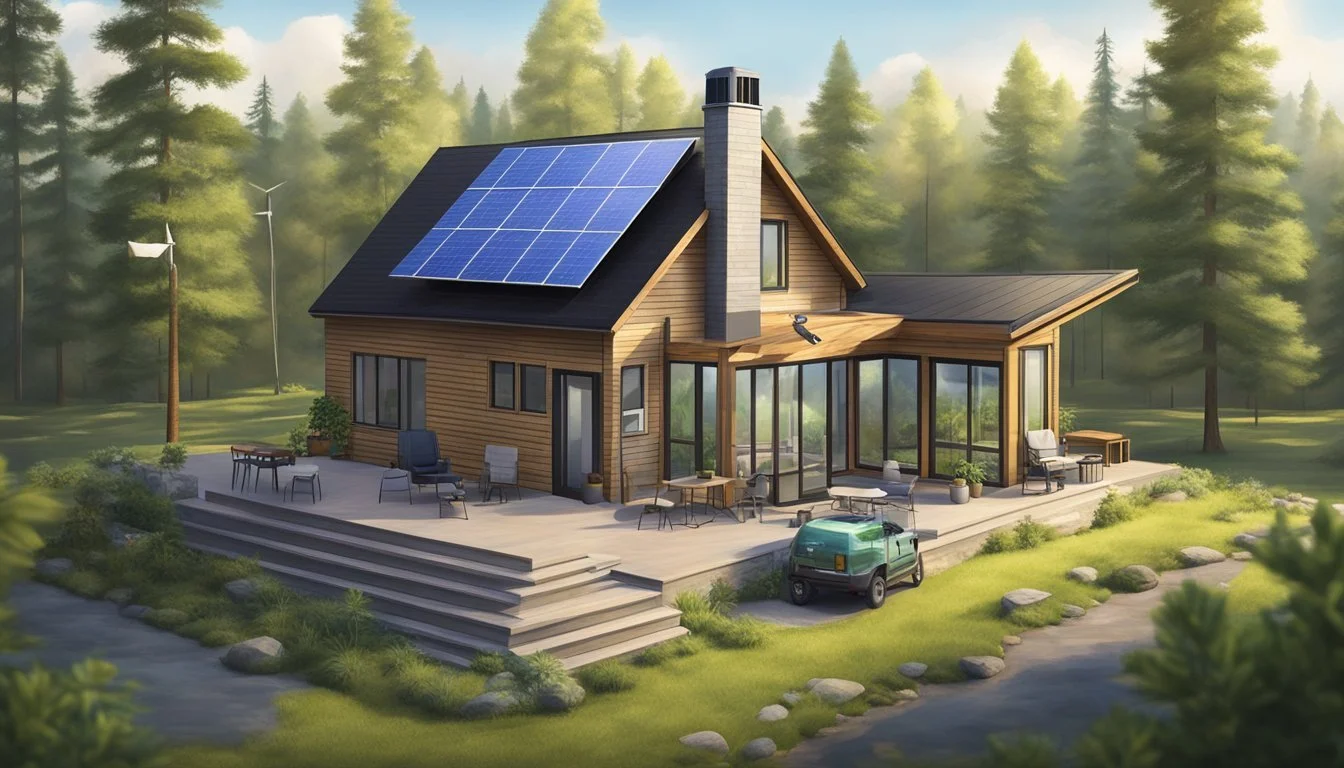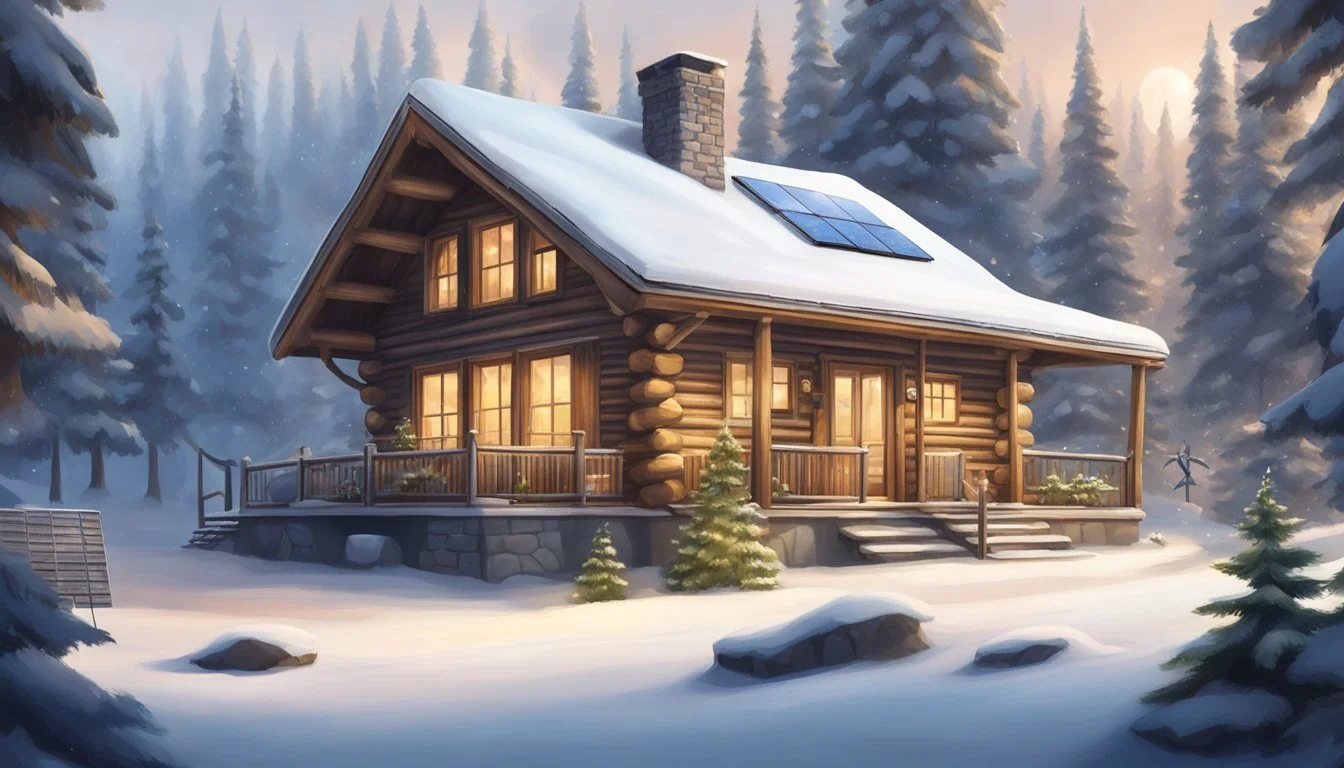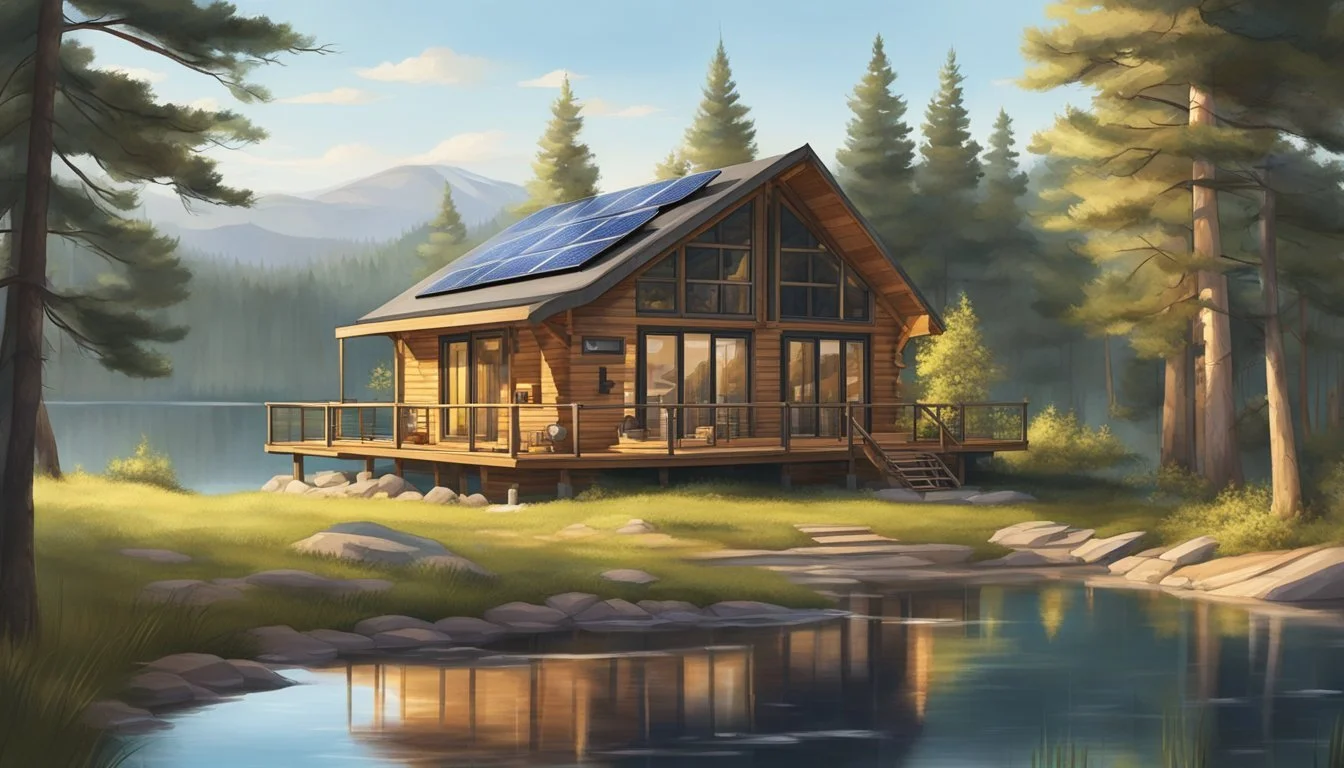Upper Midwest Off Grid Living
Essential Tips for Sustainable Independence
Off-grid living in the Upper Midwest offers a unique blend of natural beauty, self-sufficiency, and a connection to the land that appeals to many seeking a simpler lifestyle. From the lush forests of Michigan's Upper Peninsula to the rugged landscapes of Minnesota, this region provides ample opportunities for those looking to embrace off-grid life. The Upper Midwest is renowned for its off-the-grid potential, making it a prime destination for homesteaders and adventurers alike.
The off-grid lifestyle here encompasses various activities such as snowmobiling, hunting, fishing, and more, offering year-round engagement with nature. Michigan's Upper Peninsula, in particular, stands out with its expansive private lands and cabins designed for plug-free living. Not to be overlooked, Illinois’ Shawnee National Forest is another compelling choice, with its serene lakes and rugged rock formations, ideal for fall getaways.
Whether you're drawn to the unpredictability of Michigan's weather, the extensive wilderness opportunities, or the diverse landscapes in Illinois, off-grid living in the Upper Midwest promises both challenge and reward. This article delves into the best destinations and tips to start your off-grid adventure in this captivating region.
Understanding Off Grid Living
Off grid living involves disconnecting from public utilities like electricity, water, gas, and sewerage systems. Individuals who choose this lifestyle often seek greater self-reliance and a closer connection to the natural environment.
Central to this way of life is the use of sustainable living practices. Solar panels and wind turbines can generate power, reducing reliance on fossil fuels. Water collection systems, like rain barrels, provide an alternative to municipal water sources. Self-contained septic systems manage waste without relying on public sewer systems.
Foraging for food and growing your own vegetables can be integral parts of off grid living. These practices reduce dependency on grocery stores and strengthen the connection to the land.
Water rights can be crucial for those living off grid. It's important to understand local regulations regarding water usage, especially for properties with natural water sources.
Here is a quick overview of key elements related to off grid living:
Element Description Power Solar panels, wind turbines, and generators Water Collection Rain barrels, wells, and natural water sources Septic System Composting toilets, self-contained septic systems Food Supply Gardening, foraging, and livestock
Off grid living in the Upper Midwest can be unique due to climate variations. Effective planning for cold winters and hot summers, as well as managing resources year-round, is essential for success in this region.
Embracing life off the grid offers independence and a sustainable way to live. By adopting these practices, residents can reduce their environmental impact and achieve greater self-reliance.
Regional Overview
The Upper Midwest offers varied climates, abundant natural resources, and diverse wildlife. The region's distinct geographical features and rich ecosystems make it an ideal setting for off-grid living.
Climate and Geography
The Upper Midwest experiences a wide range of climatic conditions. Winters are typically cold with heavy snowfall, particularly in areas like Michigan’s Upper Peninsula. Summers are warm and humid, especially in states like Indiana and Illinois. This region includes the Great Lakes, which significantly influence the local weather patterns, creating a unique microclimate.
The geography is marked by large freshwater lakes, dense forests, and rolling hills. Lake Superior, the largest of the Great Lakes, is a significant feature, offering ample opportunities for freshwater use. Forests cover much of the Upper Midwest, providing both beauty and resources for off-grid inhabitants.
Natural Resources
The Upper Midwest is rich in natural resources essential for off-grid living. The region boasts extensive forests, offering timber for construction and firewood. Freshwater resources are abundant, with the Great Lakes, especially Lake Superior, supplying clean water.
Agricultural land is plentiful in states like Illinois and Indiana, providing the potential for self-sustaining farming. Renewable energy sources, such as wind and solar power, are also viable options due to the region’s climatic conditions. Particularly, South Dakota and Missouri have favorable conditions for both wind and solar energy production.
Local Wildlife
The Upper Midwest is home to diverse wildlife, essential for maintaining ecological balance and offering opportunities for sustainable living. Forests in the region support species like deer, foxes, and various bird species. Lakes and rivers are habitats for fish, such as trout and bass, contributing to a sustainable food source.
Areas like the Black Hills and Badlands offer a glimpse into unique wildlife ecosystems with species adapted to those specific environments. Shawnee National Forest and Garden of the Gods in Illinois highlight the rich biodiversity of the region. This abundance of wildlife enhances the natural beauty and provides essential resources for off-grid residents.
Legal and Zoning Considerations
Living off the grid in the Upper Midwest requires navigating various legal and zoning requirements. This includes obtaining the necessary permits, adhering to building codes, ensuring compliance with land and property codes, and observing environmental regulations.
Building Codes and Permits
Off-grid dwellers must comply with local building codes. Building codes ensure structures are safe and habitable. Depending on the county, specific codes might mandate standards for insulation, structural integrity, and emergency egress.
Permits are crucial for off-grid construction. Depending on the project scope, one might need permits for electrical systems, plumbing, and alternative energy installations, like solar panels. Failure to secure proper permits can result in fines or orders to cease construction.
Check with local authorities for a list of required permits. Commonly required permits include:
Building permits: For structural components.
Electrical permits: For wiring and alternative energy setups.
Plumbing permits: For water and sewage systems.
Land and Property Codes
Zoning laws govern land use and can vary by municipality. Some areas might have strict zoning laws preventing off-grid living, while others might encourage it.
Zoning codes determine what types of structures can be built on a property. It's crucial to verify if the land is zoned for residential or agricultural use. Some regions may require minimum lot sizes or specific types of dwellings.
Water rights are another key consideration. Access to and use of water sources may be regulated. In states like Michigan, obtaining a permit to drill a well is often mandatory. Always consult local zoning offices for a comprehensive understanding of property codes and their implications for off-grid living.
Environmental Regulations
Off-grid living necessitates various environmental considerations. Environmental regulations primarily aim to protect local ecosystems and water quality. Waste management is a critical area: composting toilets, greywater systems, and septic tanks must comply with health department regulations.
Energy sourcing must be environmentally compliant. Solar panels and wind turbines, while generally permissible, may require adherence to installation and safety codes. Burning of waste and fuel storage are also regulated to prevent pollution.
Building near protected areas, such as wetlands or forests, may require additional approvals. Both federal and state environmental agencies can provide guidelines on how to proceed with sustainable and legal off-grid living practices.
Selecting Your Off Grid Property
Choosing the right off grid property in the Upper Midwest involves careful consideration of land costs, access to essential resources like water, and the community dynamics in relation to population density.
Assessing Land and Cost
When selecting your off grid property, the cost of land is a primary consideration. In the Upper Midwest, prices can vary significantly based on location and amenities. Cheap off grid properties can often be found in rural areas with low population density. Look for secluded off grid homes and land for sale that already accommodate cabins, which can provide a head start in establishing your homestead.
Evaluating acreage is also critical. Larger properties offer more space for activities like farming, but may come with higher costs. It’s essential to balance the size with affordability. Natural beauty is another factor; picturesque landscapes often add value, both financially and aesthetically, enhancing the overall experience of off grid living.
Access to Water and Other Resources
Access to water is essential. Properties near lakes, rivers, or natural springs ensure a reliable water supply. Ensure any potential property has sufficient water sources for personal use, farming, and livestock. Investigate water rights and local regulations.
Other resources like timber can be crucial for building and heating. Land with abundant trees can provide both construction materials and fuel for a wood-burning stove. Access to renewable energy sources such as wind or solar should also be evaluated, as they will power your off grid home.
Community and Population Density
Considering the community and population density is important for social and logistical reasons. Low population density means fewer neighbors, allowing for a more isolated and peaceful living experience. However, being part of a small, supportive community can be beneficial, offering camaraderie and assisting in emergencies.
Investigate nearby communities. A supportive off grid community can be a valuable asset, providing knowledge, tools, and potential trade opportunities. Ensure the area aligns with your lifestyle preferences and long-term goals. Off grid life thrives in environments where like-minded individuals can collaborate and support each other, even from a distance.
Selecting the right off grid property in the Upper Midwest requires a balanced approach, focusing on practical details and personal preferences to create a sustainable and enjoyable off grid lifestyle.
Building Your Off Grid Home
Building an off-grid home in the Upper Midwest involves selecting the right type of structure, installing sustainable energy systems, and ensuring efficient water and sanitation solutions. Proper planning and understanding of these key areas can lead to a successful off-grid living experience.
Types of Homes and Structures
Choosing the right structure is crucial. Popular options include cabins, log cabins, and tiny houses. Cabins and log cabins offer sturdiness to withstand harsh winters, while tiny houses provide a budget-friendly alternative.
Materials can range from wood and stone to recycled materials. Earthships and container homes, although pricier, offer innovative designs. Evaluate your DIY skills; simpler structures like cabins and tiny houses are more beginner-friendly.
Energy and Utilities
Powering an off-grid home requires reliable sources of energy. Solar panels are a common choice due to their decreasing cost and increasing efficiency. Wind turbines can complement solar energy, especially in windy areas.
Battery storage systems are essential for maintaining power supply during cloudy or windless days. Some homeowners also use generator backups. For heating, consider wood stoves or propane heaters, particularly in spacious cabins or log cabins.
Water Systems and Sanitation
Water systems are vital for off-grid living. Many rely on rainwater harvesting or well water. Rainwater collection systems should include proper filtering and storage tanks. Wells provide a more consistent supply, but require regular maintenance.
Sanitation can be managed with septic systems or composting toilets. Septic systems are effective but involve higher initial costs and maintenance. Composting toilets offer an eco-friendly choice and are easier to set up.
Focusing on efficient water and sanitation systems ensures a sustainable and comfortable off-grid lifestyle.
Living Off the Grid Year-Round
Living off the grid year-round in the Upper Midwest requires strategic preparation for changing seasons, sustainable food sources, and an integration with the local environment. From the harsh winters to the lush growth of spring and summer, each period presents unique challenges and opportunities.
Preparing for Seasons
In regions with harsh winters, preparing for the cold months is crucial. Stockpiling firewood and ensuring proper insulation helps maintain warmth. Other essentials include winter clothing, reliable heating systems, and a well-stocked pantry.
During spring and summer, focus on planting crops and fruits in fertile soil. Utilizing greenhouses extends the growing season. Gardening is vital for producing fresh vegetables. Preparations should also include plans for rainy periods and pest management.
Fall is harvest time, which includes canning and preserving food for winter. It’s also a period for hunting, particularly for turkey and other game, which provides essential protein. Proper storage techniques ensure longevity of these resources through the following cold months.
Sustainable Food Sources
Developing sustainable food sources is essential for off-grid living. Gardening forms the cornerstone, with residents cultivating vegetables, fruits, and grains. Choosing quick-growing and high-yield varieties ensures a continuous food supply.
Fishing in local streams and ponds, as well as hunting wildlife, such as deer and turkey, complements the diet. These activities are not only sustainable but also provide vital nutrients. Foraging for wild plants such as berries and herbs can supplement garden produce.
Livestock, including chickens and goats, can provide eggs, milk, and meat. Establishing a water management system for irrigation ensures that crops and animals have a sufficient water supply year-round.
Integrating with the Local Environment
Integrating with the local environment includes understanding the regional flora and fauna. Respect local wildlife habitats and develop strategies to coexist peacefully. Spring and summer are ideal for exploring and understanding the local ecosystem.
Hiking through nearby woods and fields helps identify useful foraging locations. Creating natural barriers around the homestead can deter pests and larger predators. This interaction with nature fosters a balanced and sustainable lifestyle.
Utilizing native plants in gardening ensures better growth and resilience. Fall and winter months are ideal for maintaining and enriching the soil with compost and organic matter, ensuring a productive growing season the following year.
Financial Considerations
Living off the grid in the Upper Midwest offers a chance for sustainable and self-reliant living. Considering the financial aspects is critical for long-term viability.
Cost of Living and Savings
The cost of living in off-grid settings can vary significantly. Initial investments include alternative energy sources like solar panels or wind turbines, which may cost $15,000-$50,000. Additionally, homeowner expenses might include water collection systems and septic tanks, which add to the upfront costs.
Monthly expenses include maintenance for energy systems, fuel costs, and general upkeep. These can range from $35 to $2,200, depending on the lifestyle and specific needs. Financial incentives and tax credits might offset some initial expenses, making the investment more manageable.
Generating Income Off the Grid
Generating income while living off-grid is pivotal for sustainability. Many opt for remote work using internet via satellite networks. Agricultural ventures, such as small-scale farming or gardening, can provide both food and income.
Handcrafted products, like artisan goods, can be sold at local markets or online. Additionally, some residents may offer services such as repair work, consulting, or educational workshops. Diversifying income streams helps ensure financial stability in a remote setting.
Community and Culture
Off-grid living in the Upper Midwest, including the Upper Peninsula, thrives on a blend of close-knit local communities and unique cultural adaptations. These communities provide support, share resources, and create a sustainable lifestyle that is both self-sufficient and cooperative.
Local Communities
Local communities in the Upper Midwest, particularly in places like the Upper Peninsula, play a crucial role in off-grid living. Residents often rely on each other for essential resources and support.
Neighbors may trade goods and services, such as firewood, fresh produce, and handmade crafts. Community gatherings and shared projects are common, promoting a strong sense of unity and cooperation. Some areas have established off-grid communities where residents engage in collective decision-making and resource management. These communities might manage communal gardens, renewable energy systems, and water sources, creating a supportive network that enhances self-reliance and resilience.
Cultural Adaptations
Cultural adaptations are essential for those living off the grid in the Upper Midwest. The harsh weather conditions require specific lifestyle adjustments. Residents often adopt practices that maximize energy efficiency and resource conservation.
For instance, homes are built with thick insulation and efficient heating systems to withstand cold winters. The use of solar panels, wind turbines, and wood-burning stoves is common to ensure a steady supply of energy.
Traditional skills like hunting, fishing, and foraging are often integrated into daily life. These activities not only provide food but also reinforce a connection to the natural environment. People living off-grid tend to value self-sufficiency and sustainability, creating a culture that emphasizes environmental stewardship and resilience.
Challenges and Considerations
Off-grid living in the Upper Midwest presents unique challenges, especially in dealing with wildlife, weather, and isolation. Effective strategies are necessary to overcome these difficulties and ensure a sustainable lifestyle.
Dealing with Wildlife
Living in the Upper Midwest means encountering a diverse array of wildlife. Bears, deer, and other animals can become nuisances if not managed properly. Securing food supplies is crucial to avoid attracting these animals.
Owners must build sturdy, animal-proof storages for food and waste. Adding bear-proof containers and high fences can deter larger animals. Additionally, regular maintenance of the property helps in identifying and rectifying potential issues such as burrowing or nesting animals causing damage.
Weather and Natural Disasters
The Upper Midwest is notorious for its harsh winters with heavy snowfall and occasional blizzards. Preparing for such extreme weather is vital. Installing reliable heating systems, such as wood stoves and well-insulated homes, will combat freezing temperatures.
Natural disasters like tornadoes and floods also pose risks. Structures should be built to withstand high winds and heavy snow loads. Keeping an emergency kit and having a backup energy source like solar or wind power ensures continued safety during and after these events.
Isolation and Access to Services
One significant consideration is the isolation that comes with off-grid living in remote areas. With limited access to services such as hospitals, schools, and shops, residents must plan accordingly. Stocking adequate supplies and developing self-reliance skills are important.
Adopting communication tools such as satellite phones can help maintain connections with the outside world. Establishing a network with neighbors, even if they are miles away, creates a support system. Moreover, understanding local laws and regulations ensures legal and trouble-free living.
Together, these considerations highlight the complexity and the need for thorough preparation when deciding to live off-grid in the Upper Midwest.
Resources and Further Reading
For those interested in off grid living in the Upper Midwest, many valuable resources can provide guidance and inspiration.
Books:
Living Off the Grid: A Simple Guide to Creating and Maintaining a Self-Reliant Supply of Energy, Water, Shelter, and More by Gary Collins. This book is great for practical tips.
Gaia's Garden: A Guide to Home-Scale Permaculture by Toby Hemenway remains a staple for sustainable living.
Websites:
Treehugger offers articles on off-grid communities and sustainable practices.
Mother Earth News provides extensive resources including how-tos and real-life stories from off-grid enthusiasts.
Local Communities:
Seek out local groups on social media or forums for advice and support. Facebook has several groups focused on off-grid living in various regions.
Government Resources:
State and county extension offices often have information about soil health, water conservation, and sustainable practices relevant to the Upper Midwest.
Online Forums and Blogs:
Regularly updated sites like Homestead Honey and Off-Grid.net can be treasure troves of useful information and personal stories.
Magazines:
Mother Earth News and Backwoods Home Magazine frequently cover topics relevant to off grid living, gardening, and self-sufficiency.
By using these resources, individuals can gain in-depth knowledge and stay updated on the best practices for off grid living in the Upper Midwest.


